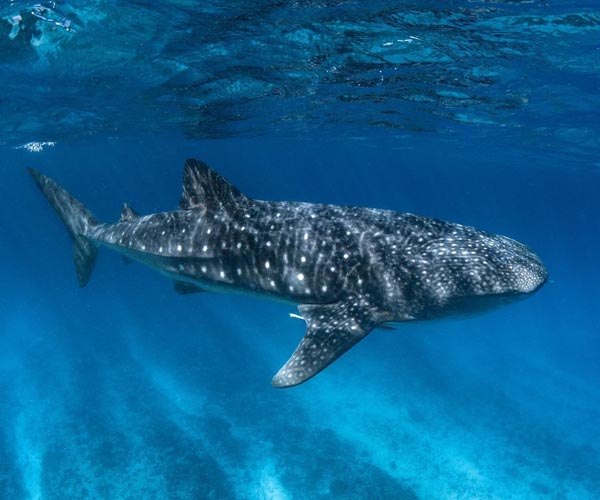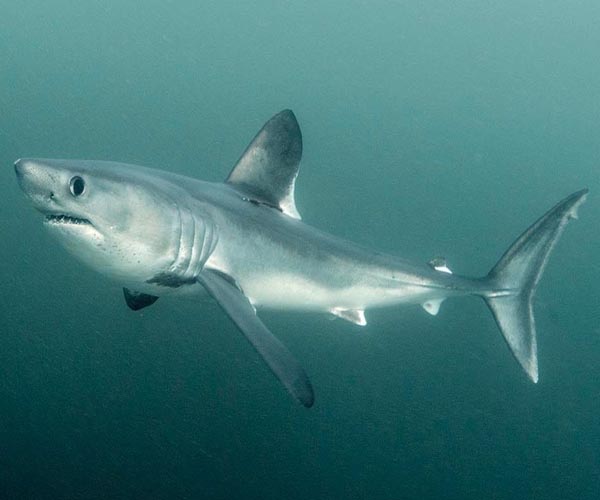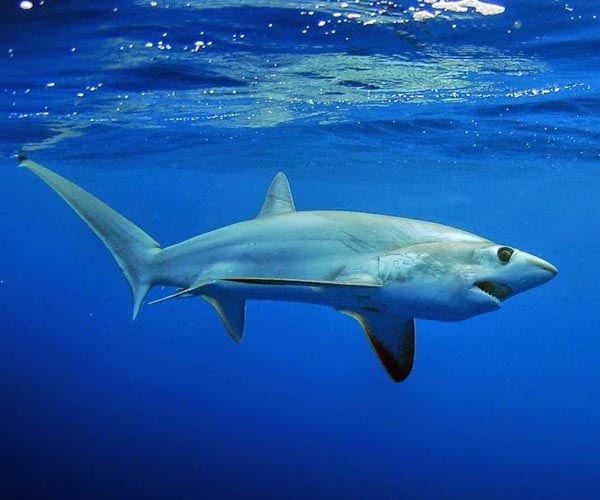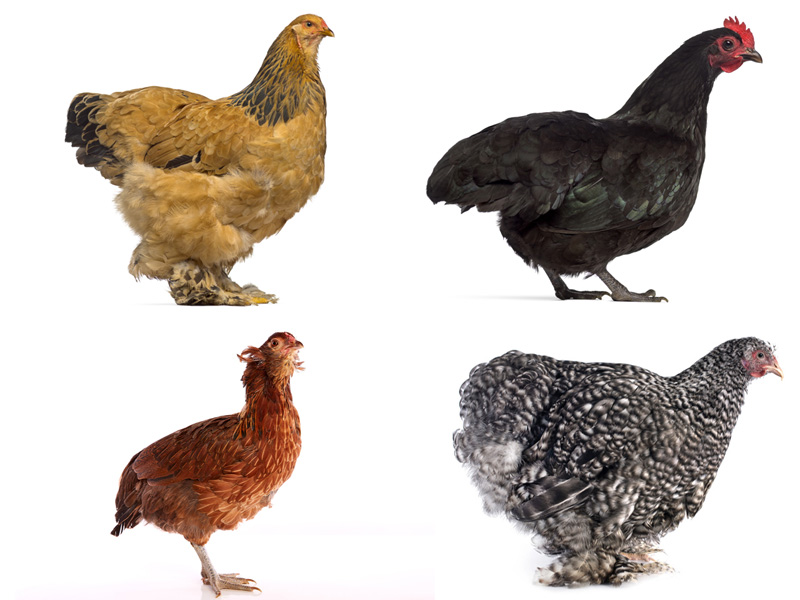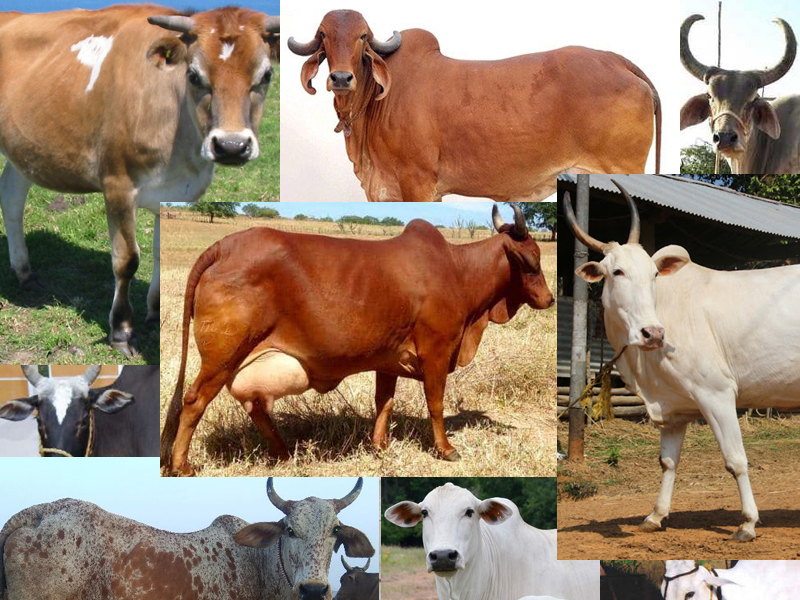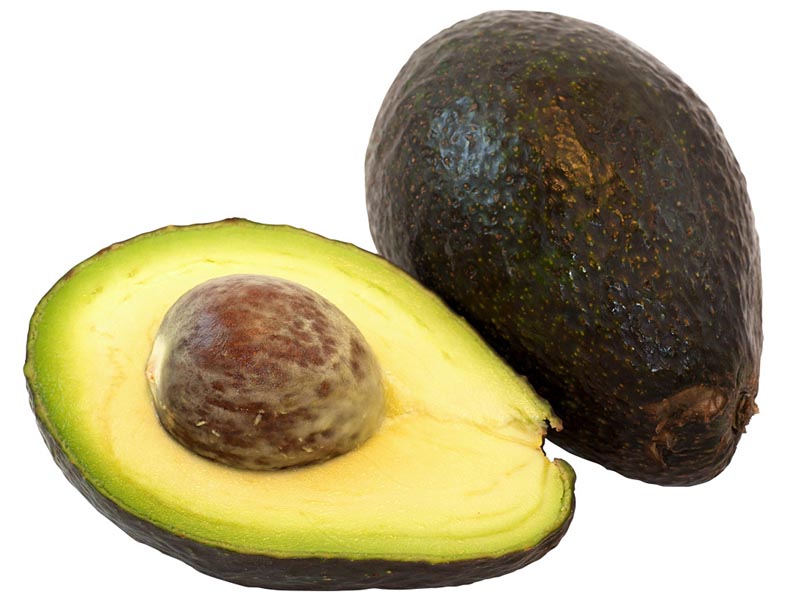We all know that shark is famous because of their charisma, appearance, and portrayal in media and movies. The widespread popularity and interest among people of all ages are also attributed to their status as apex predators and their role in marine ecosystems, making them often feared and fascinating creatures. However, have you ever wondered how many types of sharks are there worldwide? Let us dive into the captivating world of sharks as we explore these fascinating ocean predators, from graceful Hammerhead, the elusive Tiger Shark, to the majestic Great White.
Though it is impossible to name all of them in one article, we have prepared a comprehensive guide that will take you on an underwater journey to uncover each shark species’ habitats, characteristics, and behaviors in detail. Therefore, get ready to be amazed and awed by the different types of sharks as we go on an educational adventure into the deep blue sea. Read on!
What is Shark?
A shark is a diverse and fascinating group of marine creatures from the Chondrichthyes class, scientifically called Selachimorpha. Sharks are apex predators in the ocean because of their cartilaginous skeletons, robust bodies, and streamlined shapes.
Though shark characteristics vary across species, some standard features include sharp, multiple rows of tooth-like structures and a keen sense of smell that helps them detect prey even from a distance. Sharks can also spot movement in murky waters owing to their excellent vision, and they can also locate prey hidden beneath sand or coral because of their unique ability to sense electrical fields.
There are over 500 known shark species, each adapted to different lifestyles and environments. These remarkable creatures range from the tiny dwarf lantern shark, measuring 8 inches, to the massive whale shark, which can reach lengths of over 40 feet. Sharks continue to intrigue and amaze researchers and nature enthusiasts with diverse species.
20 Types of Sharks with Images:
1. Tiger Shark:
The tiger shark is usually found in tropical and temperate waters worldwide and is a giant requiem shark. These types of sharks inhabit reefs and shallow water areas surrounding land masses. This shark has tiger-like stripes on its body. Hence, the name and these stripes fade with the shark’s maturity. The tiger shark is responsible for many shark attacks on humans, after the great white shark. Many commercial fisheries worldwide have targeted and caught the tiger shark as a bycatch. The conservation status of a tiger shark is near threatened because its population is declining.
- Scientific Name: Galeocerdo cuvier.
- Length: 5m / 16.4 feet.
- Weight: 385 to 635 kg.
- Average life span: 20 to 50 years.
- What they eat: Shellfish, lobsters, small sharks, crabs, bony fish, Squid, turtles, skates, porpoises, rays, marine birds, and mammals.
2. Basking Sharks:
The basking shark is the second-largest fish and shark and is not an active predator, unlike most sharks. Instead, this shark keeps its mouth open as it swims slowly through the water, hence the name filter feeder. It has teeth-like projections on its gill arches to help separate food from the seawater. The coastal and open water in temperate and tropical waters are usually where the basking shark is found. There is a decline in the population of basking sharks because they were once targeted for their skin and meat, making them an endangered species today. The species’ population has decreased despite being legally protected from hunting in many regions.
- Scientific Name: Cetorhinus Maximus.
- Length: 8m/26 feet to 11m/36 feet.
- Weight: 5200 kg.
- Average life span: 50 years.
- What they eat: The basking shark feeds on zooplankton exclusively.
3. Bull Shark:
The bull shark is a Florida type of shark member of the requiem shark family, Carcharhinidae, found in the warm temperate and coastal waters in tropical areas globally. Built primarily and heavily, the bull shark will venture considerable distances upriver since it can tolerate fresh water, unlike most sharks. Amazon, Mississippi, Zambezi, and Ganges rivers are some places to find this shark species. The bull shark is often near humans because it is found in fresh and coastal water systems. This proximity might be why the third-highest number of shark attacks on humans is attributed to the bull shark.
- Scientific Name: Carcharhinus leucas.
- Length: 2.32 m / 7.61 feet to 3.5 m / 11.48 feet.
- Weight:
Male: 95 kg.
Female: 130 kg. - Average life span: 16 years.
- What they eat: Mostly fish, but they also eat marine mammals, other shark species, turtles, and birds.
4. Blue Shark:
The blue shark is a member of the requiem family, Carcharhinidae, and is found globally in temperate and tropical waters. This type of shark is highly migratory, moving to different areas for suitable habitats for breeding and in search of food while also being highly migratory, making them popular for their wide range. The female blue shark’s skin is more evolved. It is twice as thick as its male counterpart because of a courtship ritual involving the male biting the female.
- Scientific Name: Prionace Glauca.
- Length: 2.5m / 8.2 feet to 3.8m / 12 feet.
- Weight: up to 240 kg.
- Average life span: 15 to 16 years.
- What they eat: Squid, many types of fish, and sometimes seals.
5. Goblin Shark:
The Goblin shark is a deep-sea social mackerel shark that is rarely encountered and is the strangest type of shark worldwide. The elongated nose and jaws extending out of its mouth make it a bizarre-looking fish. The pink colour of this shark is attributed to the blood vessels close to the skin. It is said that the goblin shark is found in the Indian, Atlantic, and Pacific oceans, though very little information is available about this enigmatic fish’s lifestyle,
- Scientific Name: Mitsukurinaowstoni.
- Length: 4m / 13 feet to 6m / 20 feet.
- Weight: 209 kg.
- Average life span: Up to 60 years.
- What they eat: Rat tails, dragon fishes, cephalopods, crustaceans, including isopods and decapods.
6. Lemon Shark:
The lemon shark is found on Africa’s Atlantic coast, North and South America’s Pacific and Atlantic coasts, and the coastal waters in tropical areas. These Bahamas types of sharks have yellow-gray coloration, hence the name. Though they are relatively large, it is scarce for a lemon shark to attack humans. Mangroves, estuaries, and coral reefs are the typical habitats of lemon sharks. The species’ yellow coloration is considered camouflage in the shallow sandy water. In addition, the decline in mangrove habitats targeted by recreational anglers and some commercial fisheries contributes to the vulnerable status of the lemon shark.
- Scientific Name: Negaprionbrevirostris.
- Length: 2.75 m / 9 feet to 3.43 m / 11.3 feet.
- Weight: 100 kg.
- Average life span: Up to 27 years.
- What they eat: Bony fish and crustaceans.
7. Greenland Shark:
The Greenland shark is one of the largest shark species, with an estimated lifespan of 250 to 500 years, and is a member of the sleeper shark family, Somniosidae. These types of sharks are known for their low aggressiveness and low activity, hence the name. Living up to its name, the Greenland shark beats it’s tailless more frequently than other fish swimming under one mph/ 1.61 km/h speed. The Greenland shark is found in the Arctic and the North Atlantic oceans. This sluggish predator is believed to either capture dormant prey or ambush its prey.
- Scientific Name: Somniosus microcephalus.
- Length: 5m / 16.4 feet.
- Weight: 1000 kg.
- Average life span: 200 to 500 years.
- What they eat: Squid, Epibenthic and benthic fishes, and seals.
8. Whale Shark:
The whale shark is the world’s largest fish and shark that is not a cetacean and the largest animal. This shark’s size and behavioral resemblance to whales are uncanny, unlike most sharks, hence the name. Leaving out the Mediterranean, this whale shark is found in most parts of the world in tropical and warm waters. The whale shark is hunted in China and other countries despite its declining population and endangered status.
- Scientific Name: Rhincodon typus.
- Length: 12m / 40 feet to 18 m / 59 feet.
- Weight: 11800 kg.
- Average life span: Over 100 years.
- What they eat: zooplankton and phytoplankton.
9. Leopard Shark:
The leopard shark belongs to the hound shark family, Trikidae, which has around 40 species. From Washington state to the Baja California Peninsula and along the Pacific coast of North America are the places where you can find the Leopard shark. This type of shark is often seen swimming in estuaries and bays in large shoals and is one of this range’s most common shark species. The name of this shark is attributed to the dark spots and patches on its skin, which resemble the leopard’s coat.
- Scientific Name: Triakissemifasciata.
- Length: 1.35 m / 4.43 feet.
- Weight: 10 kg.
- Average life span: 30 years.
- What they eat: Crabs, shrimp, octopi, clam siphons, small bony fish, rays, fish, fish eggs, small bony fish.
10. Blacktip Reef Shark:
The blacktip reef shark is a type of reef shark that has distinctive black fin tips, hence the name. This shark has a blunt snout with gray-brown colour, found in the Indo-Pacific’s tropical and sub-tropical waters. It is also one of the most common inhabitants in the coral reef and coastal waters. This shark species has no predators because it is at the top of the food chain, also called an apex predator.
- Scientific Name: Carcharhinus melanopterus.
- Length: 1.6 m / 5.25 feet.
- Weight: 18 kg.
- Average life span: 10 years.
- What they eat: Mullet, groupers, wrasses, cuttlefish, Squid, shrimps, and octopuses.
11. Great Hammerhead Sharks:
The largest member of the Hammerhead shark family, Sphyrnidae, is the great hammerhead shark, predominantly known for its size. However, other than its size, the large size and sickle shape of its dorsal fin and the almost straight front edge of its head are the other prominent features of this shark. The hammer-shaped head of this shark is called the ‘cephalofoil,’ which enables the shark to see above and below by improving its field of vision. This feature also enhances the shark’s ability to sense prey by providing a wide area for the shark’s electroreceptors. Great hammerhead sharks reside in coral reefs in tropical waters worldwide. This shark species’ population is declining and critically endangered because commercial fisheries target them as an ingredient in shark-fin soup.
- Scientific Name: Sphyrna mokarran.
- Length: 5m / 16.4 feet.
- Weight: 230 kg.
- Average life span: 20 to 30 years.
- What they eat: Stingrays, skates, other rays, other hammerhead sharks, bony fish, sea catfish, Squid, and bottom-dwelling crustaceans.
12. Porbeagle Sharks:
Along with four other species of mackerel sharks, like the great white shark, lemon shark, longfin mako, and shortfin mako, the porbeagle belongs to the Lamnidae family. The porbeagle has an advantage in endurance and swimming speed while hunting in deep water and can also hunt in colder waters because they are warm-blooded, meaning their body temperature is higher than their surroundings. Unlike many sharks, the porbeagle is found in the northern and southern hemisphere’s temperate and cold waters while inhabiting open and coastal waters. Porbeagle sharks do not prey on marine mammals, unlike their white shark family relatives. The white patch at the rear end of the dorsal fin is the identifiable feature of this shark.
- Scientific Name: Lamna nasus.
- Length: 2.5m / 8.2 feet.
- Weight: 130 kg.
- Average life span: 25 to 46 years.
- What they eat: Mainly Squid. Mackerel, dogfish, herring, hake, and cod as they mature.
13. The Bigeye Thresher Shark:
Another large mackerel shark is the bigeye thresher shark, which is present worldwide in tropical and temperate waters. Though it might also occur in the open ocean, you can usually find this shark in the coastal waters. Distinctive tails with strongly elongated upper lobes and large eyes are the identifiable features of the thresher sharks. The elongated tail fin is almost half the bigeye thresher shark’s length, while they also have long pectoral fins.
- Scientific Name: Alopiassuperciliosus.
- Length: 3.3 to 4m / 10.8 to 13.1 feet.
- Weight: 160 kg.
- Average life span: 20 years.
- What they eat: Tuna, lancetfishes, hake, billfish, Squid, and various crustaceans.
14. Frilled Shark:
The frilled shark has distinctive ‘frilled’ gill slits and a long, eel-like body, making it a bizarre-looking shark. Because of its primitive features, this shark is considered a ‘living fossil because millions of years ago, even before the dinosaurs, there was a species similar to the frilled shark swimming in the Paleozoic Era’s oceans. The frilled shark is patchily distributed in the Pacific and Atlantic oceans and is dark brown.
- Scientific Name: Chlamydoselachus anguineus.
- Length: 2 m / 6.6 feet.
- Weight: 91 kg.
- Average life span: 25 years.
- What they eat: A variety of fish and other sharks.
15. Nurse Shark:
Another largest of the four species in the nurse shark family, Ginglymostomatidae, is the nurse shark, which is grey-brown in colour. The nurse shark has barbels, like many other carpet sharks, positioned above the mouth next to the nostrils and are sensory appendages. It rests on the sea bed often, is a slow swimmer, and doesn’t have to keep moving to breathe. The nurse shark is responsible for the fourth-largest documented shark attacks on humans only if threatened, despite its sluggish appearance.
- Scientific Name: Ginglymostomacirratum.
- Length: 3 m / 10 feet.
- Weight: 60 kg.
- Average life span: 25 years.
- What they eat: Spiny lobsters, small stingrays, Squid, sea urchins, and bony fishes.
16. Sand Devil Shark:
The sand devil is found in the western Atlantic Ocean and is a species of angel shark in the family Squantinidae. This shark spends most of their time on the sea bed, has flat, ray-like bodies, and is brown-grey. The sand devil is found in North America from New England south to Mexico’s Atlantic coastline. The sand devil buries itself in mud or sand while waiting for suitable prey to pass overhead, calling it an ambush predator, similar to other angel sharks. This shark has sharp teeth, which can cause nasty injuries and will attack humans when provoked.
- Scientific Name: Squatina dumeril.
- Length: 1.37 m / 4.5 feet.
- Weight: 16 kg.
- Average life span: 25 to 35 years.
- What they eat: Squid and small teleost fishes.
17. Great White Shark:
One of the most famous breeds of shark species because of its role in the bool and the film with the name ‘JAWS’ is the great white shark. This shark is responsible for most of the attacks on humans and is deserved the fearsome reputation it has. However, the species’ attacks on humans are sporadic and not targeted. Great white sharks are present globally and near the coast in warm and temperate waters. However, you can also find them in the open ocean because they are known to migrate long distances.
- Scientific Name: Carcharodon carcharias.
- Length: 4.27 m / 14 feet.
- Weight: 680 to 1100 kg.
- Average life span: 40 to 70 years.
- What they eat: Squids, fish, invertebrates, and marine mammals.
18. Sand Tiger Shark:
The sand tiger shark is found worldwide in the temperate and subtropical regions of coastal waters. This shark hunts near the sea bed, and the pointed, conical snout is the identifiable feature. You can always see this shark’s thin, pointy teeth because it swims with its mouth open. The sandy tiger shark rarely bothers humans despite its toothy appearance and relatively large size. Because of overfishing, the sand tiger shark is critically endangered and being targeted and caught by the world’s several commercial fisheries.
- Scientific Name: Carcharias Taurus.
- Length: 2.6 to 3.2 m / 8.5 to 10.5 feet.
- Weight: 87 kg.
- Average life span: 15 to 40 years.
- What they eat: Small sharks, rays, Squid, crustaceans, small and large bony fish.
19. Silky Shark:
The silky shark is a species of shark usually found globally away from land in tropical waters while venturing into coastal waters sometimes. It belonged to the requiem shark family. In addition to the oceanic whitetip and blue sharks, silky sharks are the most encountered in the open ocean. You can identify the silky shark by its tiny rear dorsal fin, small front dorsal fin, and streamlined body, hence the name.
- Scientific Name: Carcharhinus falciformis.
- Length: 2.5m / 8.2 feet.
- Weight: 190 kg.
- Average life span: 23 years.
20. Port Jackson Shark:
The Port Jackson shark is common in Australia’s coastal waters and is a species of bullhead shark. It is most active at night and is a bottom feeder. Port Jackson’s head is blunt with ridges over the eyes, similar to the other bull sharks. These shark species give lay eggs rather than giving birth to young ones, unlike many other sharks. The significant, spiral-shaped egg cases protect the eggs of these shark species.
- Scientific Name: Heterodontus portusjacksoni
- Length: 1.65m / 5.41 feet.
- Weight:
Male: 6 kg.
Female: 14 kg. - Colour: Light brown, Grey, Whitish, or Fawn coloured bodies.
- Average life span: More than 30 years.
- What they eat: Fishes, Sea urchins, Crustaceans, Molluscs.
Interesting facts about Sharks:
Here are some unique facts about sharks that you might find interesting. They are:
- Sharks have been around for over 400 million years, making them ancient and some of the Earth’s oldest living creatures.
- Unlike most fish, sharks must keep swimming to breathe because they extract oxygen from water by relying on continuous water flow over their gills.
- Sharks can detect electrical signals given off by living creatures, helping them locate prey even in total darkness with the help of special sensory organs called ampullae of Lorenzini.
- Sharks preferred diet depends on their habitat and species, which creates a variation in their diet. For example, some consume large marine animals like seals and other sharks, while others feed on small fish and plankton.
- Some shark species travel vast distances across oceans, undertaking incredible migrations.
- Sharks’ body temperature matches the surrounding water, calling them cold-blooded animals. This adaptation technique helps them thrive in various environments and conserve energy.
- Overfishing and habitat destruction by humans are some of the reasons why sharks are facing increased threats.
The world of sharks is awe-inspiring and truly diverse, with fearsome predators like the great white to gentle giants like the whale shark. Each shark species contributed to marine ecosystems uniquely. Therefore, to conserve and maintain the health of our oceans, it is crucial to understand and appreciate the various types of sharks. We hope the information in this article will help you give knowledge about these magnificent creatures while striving to preserve and protect their habitats. Don’t forget to let us know if you found the article helpful!
Disclaimer: The information provided in this article is based on pure research and is for educational purposes and general knowledge only. It doesn’t constitute professional recommendations or advice.









